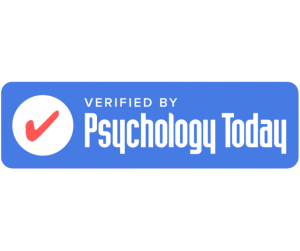As the opioid epidemic continues, so does the search for new and improved methods of treatment. If you’re one of the people who keep looking for the latest treatment methods, you may have already heard of ultra-rapid detox (UROD).
Moreover, if you have also heard of rapid detox, you may be wondering how these two treatment methods differ and whether or not either of them is a good option for you.
Luckily, our guide can help you solve this dilemma and learn about the potential risks, complications, and side effects associated with ultra-rapid detox. It also covers more details about the cost of the treatment, follow-up care, and even some better treatment options.
What is Ultra-Rapid Detox?
Ultra-rapid opioid detoxification is the process of quickly ridding the body of all opioids that can only be performed under the close supervision of a licensed medical professional. It differs from the traditional forms of opioid detox in the speed at which the body is purified from harmful substances.
This type of treatment is used to help individuals who are struggling with opioid use disorder detox from any drugs in their system.
The whole process usually takes around 44 hours. During this time, a patient is put under general anesthesia, and an opioid antagonist is administered to block all opioid effects. This way, the bloodstream gets cleansed of the drugs. The procedure is usually followed by a 2-day hospital stay, and, like most other opioid treatments, it works best when paired with behavioral and pharmacological therapies as well.
Ultra-rapid detox is not recommended for anyone with any of the following contraindications:
- HIV
- Pregnancy or breastfeeding
- History of seizures
- Hepatitis infections
- Alcoholic liver damage
It’s important to note that ultra-rapid detox is only the first step on the road to recovery. It can be done quickly, but the treatment required for a successful and long-term recovery doesn’t end with it.
The Difference Between Ultra-Rapid Detox and Rapid Detox
Ultra-rapid detoxification is in many ways similar to rapid detoxification. These are slightly different methods of detox that may also have different outcomes. Let’s see some of the more significant differences between these treatment methods.
| Rapid Opioid Detox (ROD) | Ultra-Rapid Opioid Detox (UROD) |
| This medical procedure involves the administration of medications that speed up the detox process. | This procedure also involves the use of medications, but with a different objective than the medications administered during ROD. The drugs administered during UROD are intended to quickly reduce the patient’s tolerance to opioids. |
| The drugs that are administered during this process include mild sedatives and drugs that reduce withdrawal symptoms. | During this process, the patient is heavily sedated or put under general anesthesia. |
| ROD has a lower success rate than UROD. | UROD has a higher success rate and efficacy than ROD, but still isn’t close to the efficacy of ANR. |
Ultra-Rapid Detox Withdrawal Symptoms
Withdrawal is a medical term used to explain the variety of symptoms that an individual may experience while their body is detoxing from the drug they have become dependent upon. It’s typically characterized by a group of symptoms that are usually uncomfortable and sometimes even painful.
During the ultra-rapid opioid detoxification process, patients will go through most of their withdrawal symptoms while they are under general anesthesia. If the patient experiences any withdrawal symptoms after sedation, these are believed to be significantly less severe than they normally would be due to the opioid antagonist medications administered.
After UROD, some of the residual withdrawal symptoms may include:
- Bone pain
- Muscle pain
- Nausea and vomiting
- Diarrhea
- Drug cravings
- Insomnia
One article states that the biggest reason for failure or relapse during the two weeks after undergoing UROD is insomnia. This is because many opioids significantly alter the body’s natural sleep/wake cycle, and after prolonged use. So, since the body needs some time to reestablish a normal sleep cycle, a patient may find it much more difficult to fall asleep after detoxing.
Treatment After Ultra-Rapid Detox
After the ultra-rapid detox treatment has been completed, the follow-up treatment will likely be determined by each individual’s needs. While some patients may require additional medications or continued therapy/counseling, most patients will be able to return to their typical daily routines within a few days after detox.
How Effective is Ultra-Rapid Detox?
One study looked at ultra-rapid detoxification in 20 patients. They analyzed the patient’s symptom control within the first 12 hours and then checked in with them again 12 weeks later. They found that good symptom control was achieved in all patients, not including restlessness. After 12 weeks, the results showed that 25% of patients had remained abstinent, and 75% had relapsed.
Another study showed very similar results. The researchers evaluated a group of 64 patients post-UROD and found that after six months, 75% relapsed.
As you can see, in the majority of cases, this treatment method is not effective long-term. The reason for the lack of success associated with UROD is the fact that this treatment method fails to address the biological root cause of addiction. Needless to say, this significantly increases their chances of relapsing after treatment.
Complications and Risks of Ultra-Rapid Detox
Some sources might argue that ultra-rapid detox is a safe and effective treatment, but most experts disagree, claiming that this treatment option can be dangerous and complicated. Here’s why:
- There is currently very little evidence showing that increasing the speed of the detoxification treatment will also improve any long-term benefits.
- Although ultra-rapid detox speeds up the withdrawal process, the patient will still require significant treatment in the future.
- Greater costs associated with UROD might make the overall process more financially difficult.
- The lack of evidence supporting long-term benefits leaves patients with a less-than-appropriate risk/benefits ratio.
In addition to these problems, there are also some medical risks and potential adverse effects of the ultra-rapid detox treatment. These may appear due to the combination of anesthesia and medication used to quickly remove any toxins from the patient’s body and can be quite dangerous for the patient.
The above-mentioned side effects may include:
- Weakness
- Nausea
- Diarrhea
- Blurred vision caused by an electrolyte imbalance
- Gastric ulcer
- Thyroid hormone suppression
- Speech difficulties
- Aspiration pneumonia or pulmonary edema due to fluid accumulation in the lungs
- Heart attack
- An enlarged heart
- Kidney failure
- Sepsis
- Elevated blood sugar
- High blood pressure
- Worsening of pre-existing mental health disorders
- Thoughts of self-harm
- Delirium
The Cost of Ultra-Rapid Detox
Ultra-rapid detox can cost anywhere from $10,000 to $20,000, and in most cases, it’s not a procedure that is typically covered by a traditional health insurance plan.
Another reason why insurance plans do not typically cover this type of treatment is that it is still a relatively new type of service and is technically in the experimental stage.
ANR Opioid Dependence Treatment: The Most Effective Option
When considering your options for treating opioid dependency, you might get overwhelmed with all of your options. But the one that you don’t want to skip over is ANR.
Accelerated Neuro-Regulation (ANR) is a treatment that utilizes modern medicine and technology to treat patients and help their brain return to a pre-addiction state.
Undergoing ANR means that the patient will not have to endure any withdrawal symptoms or intense cravings at any point in their recovery. The treatment usually requires a 36-hour hospital stay, after which the person can return to normalcy and enjoy an opioid-free life.
What Makes ANR Treatment Better than Ultra-Rapid Detox?
As previously mentioned, a patient’s body gets rid of harmful substances during the ultra-rapid detox process, but the root cause of opioid addiction isn’t addressed. This means the person is more likely to start using again, even though they didn’t go through opioid withdrawal during the detoxification process.
When a person undergoes the ANR treatment, their opioid receptors and endorphin levels are regulated and returned to a pre-addiction state. This way, not only do they bypass the unpleasant withdrawal effects, but the main cause of their addiction gets removed, which gives them higher chances of successful opioid recovery.
Also, after undergoing ultra-rapid detox, an individual will likely require a significant amount of follow-up care, such as long-term therapy and counseling. However, this is not the case with ANR. The individual’s brain is returned to a pre-addiction state, so there will be no withdrawal symptoms or cravings, which significantly decreases the chances of relapsing.
Key Takeaways
Whether it’s you or someone you love struggling with opioid use disorder, it is important to get help as soon as you can. Hopefully, this article has given you a little more clarity on which treatment method would be the best fit for you or your loved one. ANR is bringing the future of opioid treatment to you today with its modern technology and ability to get to the root of the problem.







